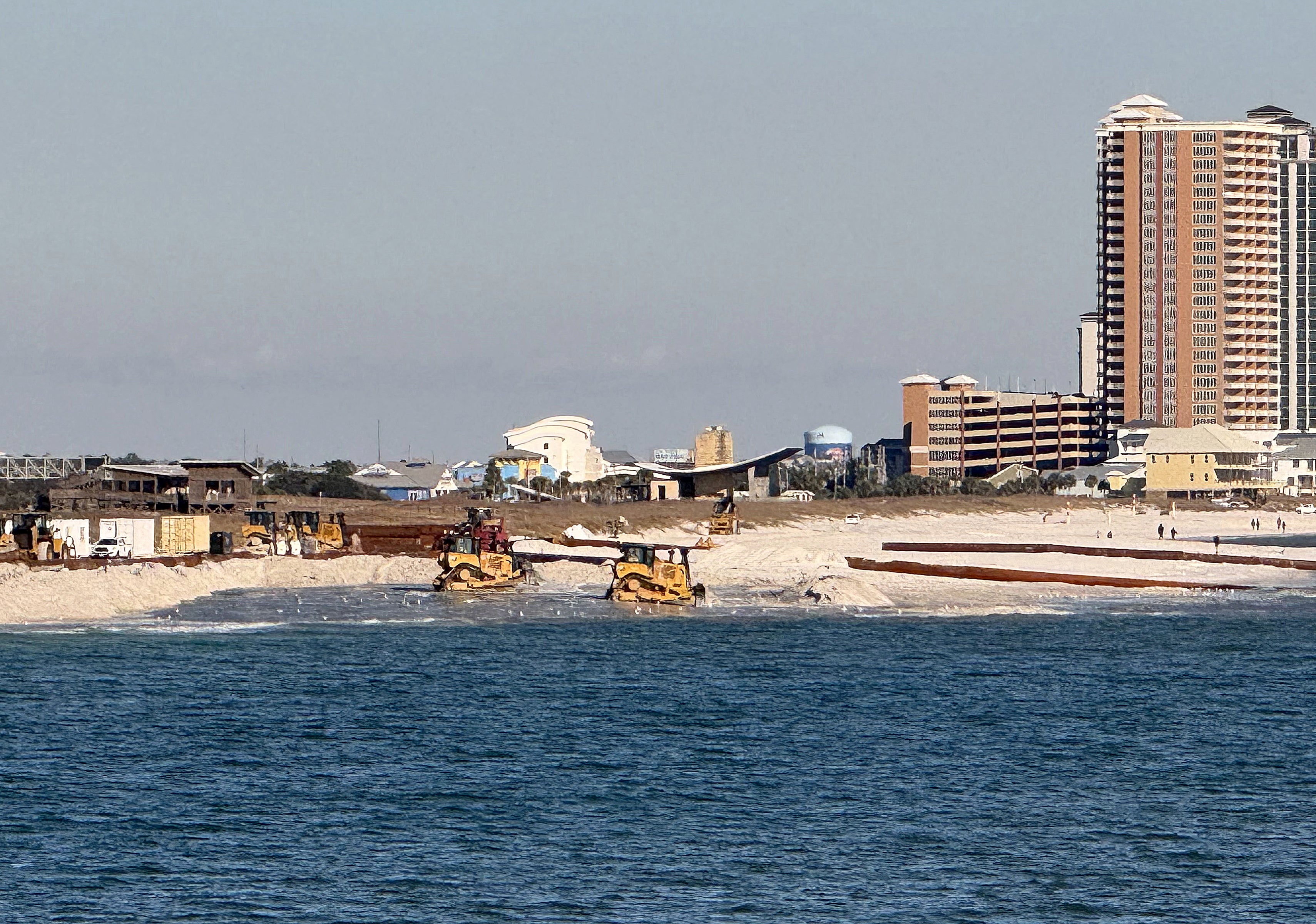By DAVID RAINER, Alabama Department of Conservation and Natural Resources
For those planning trips to Alabama’s beautiful Gulf Coast for spring break or summer vacation, expect to see an abundance of change for the better, including beach renourishment projects at the East End of Dauphin Island and in Baldwin County from west of Little Lagoon Pass all the way to the Florida-Alabama line.
“It is great to see our beach being renourished. From the Florida line through Gulf State Park and Gulf Shores to west of Little Lagoon Pass, the beaches in Baldwin County are getting several million cubic yards of fresh, clean sand,” said Conservation Commissioner Chris Blankenship. “On Dauphin Island there is a lot of sand moving as well. In 2023, new islands and marsh area were created on the north side of the middle of Dauphin Island in Graveline Bay. The East End renourishment project just getting underway will put more than a million cubic yards of sand on the East End beach. The Corps of Engineers has closed the Pass Drury cut on Little Dauphin Island with sand dredged from the inside channel, and we are funding the engineering and design for adding millions of cubic yards of sand to the West End of Dauphin Island in 2025 or so. All of this work on the area around Dauphin Island will be great for sustaining the ecological and cultural benefits that Dauphin Island provides for our area.”
The engineered beach renourishment projects involve pumping more than three million cubic yards of sand from nearshore areas onto the Alabama beaches. Those projects, which also include raising the sand dune heights, planting vegetation and building sand fences, are partially funded by FEMA (Federal Emergency Management Administration), the NFWF (National Fish and Wildlife Foundation) Gulf Environmental Benefit Fund (GEBF), and from state and local dollars.
Bill Bennett, General Manager of The Lodge at Gulf State Park, said the beach renourishment project may be a slight inconvenience during the work but will pay great benefits for the future of the Alabama Gulf Coast. He said the locations where he’s lived that have beaches face the same reality of coastal erosion, which requires beach renourishment projects like the one proceeding in Alabama.
“This project is absolutely amazing to witness,” Bennett said. “It disrupted a few people on overnight stays, but when you walk out on that east boardwalk and watch the ship come in and pump sand on the beaches and bulldozers moving the sand into place, you watch your natural habitat expand and protect everything north of the coastline. That’s what the dunes are designed for. It’s truly humbling to watch.
“We had a couple come down from Mobile for a few days of tranquility, and they weren’t inconvenienced. Like me, they thought it was fascinating to watch. Instead of being a disruption, they focused on the positive aspects.”
Bennett applauded the commitment made by the cities, county and the Department of Conservation to ensure the vitality of the beaches.
“I’ve lived all around the country, and we have some of the most beautiful beaches in the country,” he said. “In watching the renourishment, it speaks to their commitment to the protection of this natural asset. It makes me proud of our commitment to sustainable environmental and economic stewardship. This is taking care of it and ensuring it will be here for years to come for our children and grandchildren.”
The project in Baldwin County has completed the work in Gulf Shores and Gulf State Park and has just started to pump sand on the beaches of Orange Beach. It will continue until it reaches the Florida-Alabama line.
Phillip West, Coastal Resources Director for the City of Orange Beach, said the current beach renourishment is not quite as large as the one completed in 2005 after Hurricane Ivan, where more than three million yards of sand were used to mitigate the storm damage.
“The current project will use about 650,000 yards of material in Orange Beach,” West said. “It’s not as huge as the project after Hurricane Ivan because the beaches aren’t in as bad a shape as they were after Ivan. This project is to repair storm damage from Hurricanes Nate (2017) and Sally (2020) and repairing normal erosion. The project includes fixing breaches in the sand dunes, planting sea oats and installing sand fences.
“Prior to Ivan, we’d never done any beach renourishment, and it showed. By maintaining our beaches and doing these periodic renourishments, we are able to maintain an ‘engineered beach’ designation in the eyes of FEMA. If you maintain that, if you do have a catastrophic event, FEMA will cost share with you to repair the damage.”








